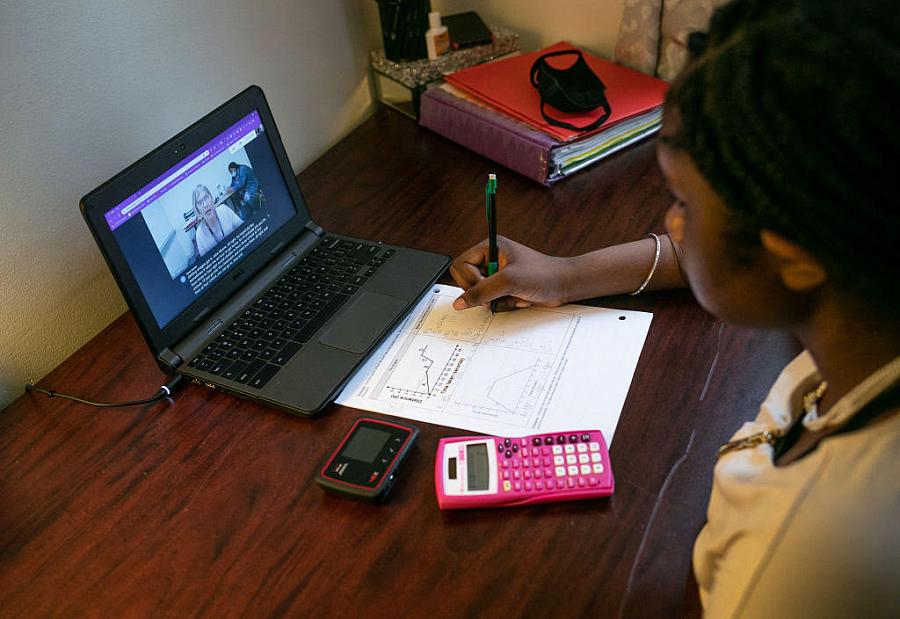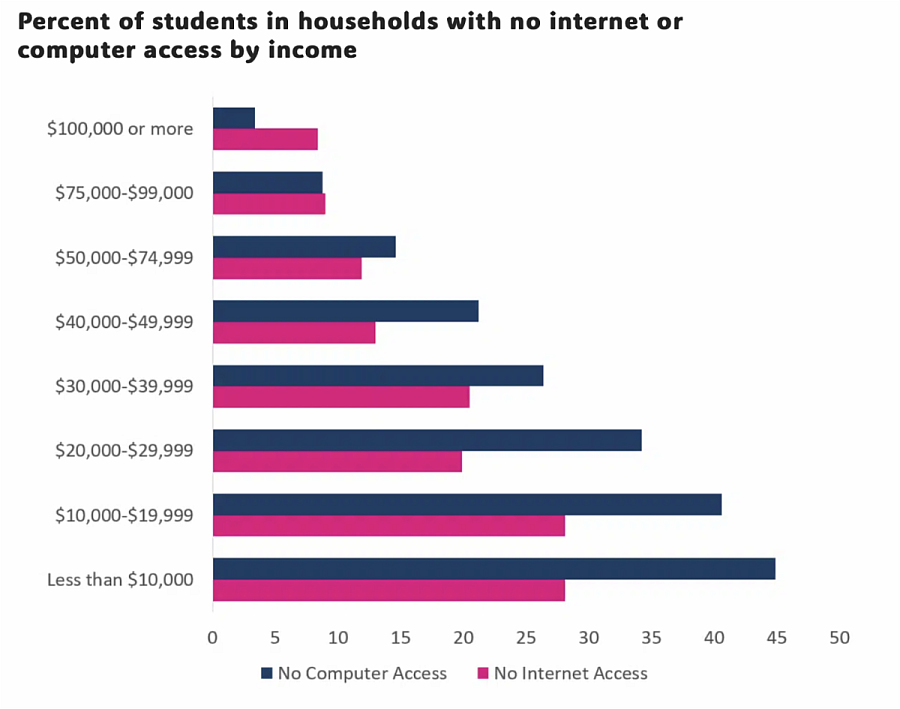The Health Divide: With internet subsidies ending, will low-income households fall further behind?

Photo by John Moore/Getty Images
Starting in June, low-income households who previously received discounted internet rates through the Affordable Connectivity Program will likely experience an increase in their internet bills.
The Affordable Connectivity Program, a crucial component of President Joe Biden’s 2021 infrastructure bill, has been instrumental in bridging the digital divide. It has allowed low-income households to reduce their internet bills by up to $30 monthly, a significant relief for many. Its potential expiration could have far-reaching implications for digital equity, particularly among rural populations and people of color.
While Biden has advocated extending the program, April was the last fully funded month.
According to Brookings, some people are forced to pay exorbitant prices for internet connectivity or lack sufficient bandwidth to use the internet effectively.
In today’s world, the internet has become a necessity that is almost as important as basic needs such as food, clothing, shelter, and electricity. The unfortunate reality is that only some have access to it. Rural communities face more connectivity challenges compared to urban areas. The cost of internet access is higher, the speed is slower, and the infrastructure needs to be updated.
Internet access is essential for telehealth appointments, online classes, and social media. These services were vital during the pandemic, and Zoom classrooms and birthday parties helped us stay connected.
We now risk deepening the digital divide in our society, where the poor of the 21st century are deprived of this fundamental need.
Millions of Americans enrolled in the program
I witnessed firsthand the significance of free or affordable internet for many residents of the city where I live, Milwaukee.
If you visit any Milwaukee library, you can see people standing outside the building hours before it opens, there to use the library's Wi-Fi. Some even sit in their cars to access the internet.
The Affordable Connectivity Program, launched by the Federal Communications Commission in 2022, was part of a $1 trillion infrastructure package passed by Congress the year before.
The program helped make the internet more affordable for millions of people. Eligible households received discounts of up to $30 per month on their internet service, and households on Tribal lands received discounts of up to $75 per month.
Participating providers also offered eligible households one-time discounts of up to $100 to be used on laptops, desktops, or tablets if the user-contributed between $10 and $50 towards the purchase.
More than 23 million American households received assistance through the program.
Internet poverty is a significant problem that has been under discussion for years. The digital divide, also known as the internet gap, has been identified as one of the leading causes of this issue.
According to a survey conducted by Pew Research Center in 2021, low-income households are less likely to have access to the internet at home or own a computer than higher-income households. Black and Hispanic individuals are also less likely to have internet access or a computer at home compared to white individuals, research shows.
Basic tasks like job applications, bill payments, and remote work become incredibly challenging without internet or computer access.

Credit: USA Facts
During the pandemic, millions of households lacked access to computers for online learning. In Milwaukee, thousands of students disappeared from school enrollment data.
Why high-speed internet matters
The digital divide can become political as the presidential race heats up. In a recent visit to Milwaukee, Vice President Kamala Harris said expanding broadband access is crucial to everyone from young students to elderly people.
"Our children cannot learn and do their homework without access to high-speed internet that is both accessible and affordable," she said. "And if you don't have access to high-speed internet, if you don't have broadband access — if you can't afford it — a very critical process of helping people be healthy and telemedicine is unavailable to them."
It’s becoming less common for employers to accept paper job applications as more companies require applicants to apply online. Similarly, having access to medical records online has become essential for scheduling appointments, refilling prescriptions, checking test results, or communicating with physicians about a diagnosis. Without reliable internet access, people will face difficulties accessing these essential resources.
How will the Biden administration and Congress ensure internet affordability for low-income individuals? Harris did not give specifics, but at least we know it’s on her radar.
Can states create their own version of the ACP? It’s unlikely, given the budget implications. For example, duplicating an ACP in Michigan would cost $350 million annually.
Eric Frederick, Michigan’s chief connectivity officer, told Route Fifty
that either the subsidy or the eligibility criteria must be changed to reduce the number of people using the program.
Internet access must be available to all, regardless of their financial standing. Letting the ACP expire pushes us further from that basic goal, with big implications for health and equity in communities across the country.

